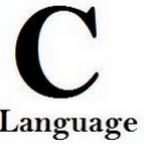Users Online
· Guests Online: 24
· Members Online: 0
· Total Members: 188
· Newest Member: meenachowdary055
· Members Online: 0
· Total Members: 188
· Newest Member: meenachowdary055
Forum Threads
Newest Threads
No Threads created
Hottest Threads
No Threads created
Latest Articles
DEMO - Professional C Course
 DEMO - Professional C Course
DEMO - Professional C CourseProgramming Languages |
| Categories | Most Recent | Top Rated | Popular Courses |
| Uploader | Date Added | Views | Rating | |
| Superadmin | 14.03.16 | 916 | No Rating | |
| Description | ||||
| Professional C Programming LiveLessons, Part I: Writing Robust, Secure, and Reliable Code provides an in depth explanation of how to use common C language features to produce robust, secure, and reliable code. Author, instructor and programmer, Robert C. Seacord created this video for developers who have previous experience in C language programming. In six lessons, Professional C Programming, Part I shows developers how to perform common C language programming tasks correctly while avoiding programming errors that are not always detected or reported by the compiler. Robert C. Seacord leads the Secure Coding Initiative at CERT, located in Carnegie Mellon University’s Software Engineering Institute (SEI) in Pittsburgh, PA. Seacord is an adjunct professor in both the School of Computer Science and the Information Networking Institute at Carnegie Mellon University. He is also the author of The CERT C Secure Coding Standard and Secure Coding in C and C++ as well as other books on computer security, legacy system modernization, and component-based software engineering. Table of Contents: Introduction Lesson 1: Integer Types Learning objectives Introduction to integer types Unsigned integers Signed integers Character types size_t, ptrdiff_t, intmax_t and uintmax_t Summary Lesson 2: Integer Conversions Learning objectives Conversion rank, promotions, and the usual arithmetic conversions Conversions to unsigned types Conversions to signed types Summary Lesson 3: Integer Operations Learning objectives Assignment Addition and subtraction Multiplication and upcasting Division/remainder Shifting Summary Lesson 4: Characters, Arrays, and Strings Learning objectives Sizing arrays String literals and their use as array initializers Character types and what they are used for Summary Lesson 5: String Handling Learning objectives Caller allocates, caller frees Bounds-checking interfaces Callee allocates, caller frees (POSIX) Summary Lesson 6: Optimization Learning objectives Undefined behaviors and the “as if” rule Constant folding Algebraic simplification and pointer arithmetic Hoisting of loop-invariant computations Dead-code removal Aliasing Summary Summary | ||||
Ratings
Comments
No Comments have been Posted.
Post Comment
Please Login to Post a Comment.
